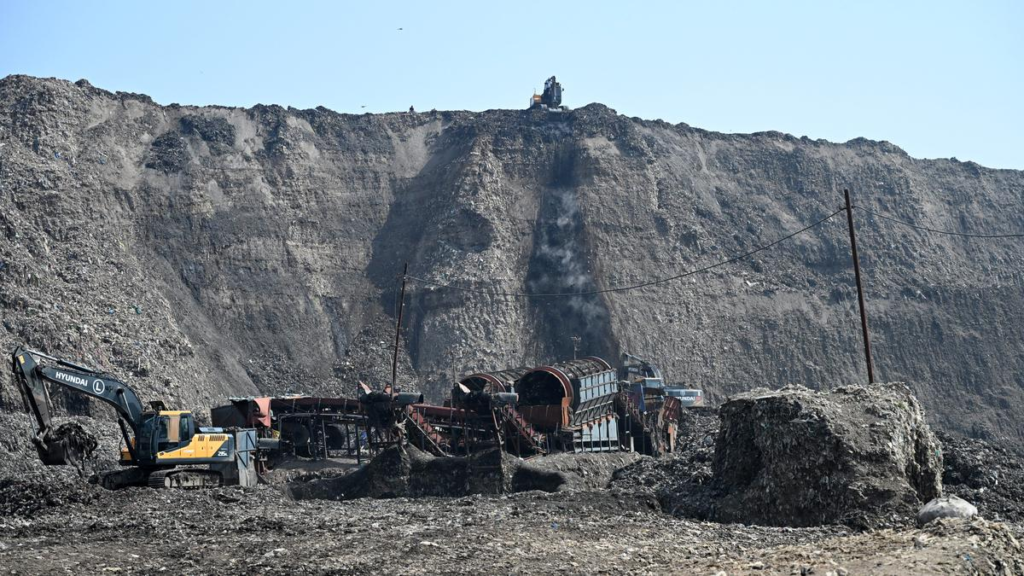| UPSC Relevance – Prelims The 2025 Environment Protection (Management of Contaminated Sites) Rules are important for Prelims as they relate to environmental laws, CPCB role, Polluter Pays principle, hazardous waste management. Mains-rules are relevant to GS2 (policy, governance) and GS3 (environmental protection, sustainable development). |
Why in News?
On 25th July 2025, the Ministry of Environment, Forest and Climate Change (MoEFCC) notified the Environment Protection (Management of Contaminated Sites) Rules, 2025 under the Environment Protection Act, 1986.
For the first time, India has a codified legal framework to systematically identify, assess, and remediate chemically contaminated sites, an environmental challenge that has persisted for decades without comprehensive regulation.

Background;What are Contaminated Sites?
As per the Central Pollution Control Board (CPCB):
“Contaminated sites are those where hazardous or other wastes were historically dumped, leading to likely contamination of soil, groundwater, or surface water, posing risks to human health and the environment.”
- Sources: Old industrial areas, chemical waste storage, spills, unregulated landfills, obsolete pesticide storage.
- Scale of the Problem:
- 103 sites identified across India.
- Only 7 sites have started remediation.
- Many polluters have either shut down or lack the funds for cleanup.
Historical Context & Need for the Rules
- Until now, there was no unified law on chemical site remediation.
- The Capacity Building Program for Industrial Pollution Management (2010) aimed to:
- Prepare an inventory of contaminated sites.
- Develop guidance manuals for assessment and cleanup.
- Establish a legal, institutional, and financial framework — now achieved through the 2025 rules.
Key Features of the 2025 Rules
1. Identification & Reporting
- District administration must submit half-yearly reports on suspected sites.
- State Pollution Control Board (SPCB) or designated Reference Organisation conducts preliminary assessment within 90 days.
2. Detailed Investigation
- Within 3 months of preliminary findings, a full contamination survey must confirm hazardous chemical levels (189 substances listed under Hazardous and Other Wastes Rules, 2016).
3. Public Disclosure & Site Control
- Confirmed contaminated sites to be listed publicly.
- Restrictions imposed on public entry.
4. Remediation Planning
- Reference Organisation drafts site-specific remediation plans using best available technologies (e.g., bioremediation, thermal desorption, soil washing).
5. Polluter Pays Principle
- Polluters must bear cleanup costs.
- If absent or bankrupt, Centre/State will fund remediation.
- Criminal liability under Bharatiya Nyaya Sanhita, 2023 for proven harm to life/property.
Exemptions
The rules exclude contamination from:
- Radioactive waste (regulated under Atomic Energy Act)
- Mining operations
- Marine oil spills (Merchant Shipping Act)
- Municipal solid waste dumps (Solid Waste Management Rules, 2016)
Challenges
- Absence of Strict Deadlines
○ No fixed remediation completion timelines could lead to indefinite delays. - Technical Gaps
○ Limited lab capacity to analyse complex chemical pollutants.
○ Need for advanced remediation technologies like in-situ thermal treatment or nanoremediation. - Funding Bottlenecks
○ Cleanup costs can run into hundreds of crores — funding gap if polluters are missing. - Overlapping Jurisdictions
○ Multiple laws (Water Act, Air Act, Hazardous Waste Rules) risk causing procedural delays. - Public Awareness
○ Communities often unaware of contamination risks; delays in health interventions.
Judicial Perspective & Legal Principles Applied
- M.C. Mehta v. Union of India (Oleum Gas Leak, 1987) – Established Absolute Liability for hazardous industries.
- Vellore Citizens Welfare Forum v. Union of India (1996) – Recognised Precautionary Principle & Polluter Pays principle.
- Indian Council for Enviro-Legal Action v. Union of India (1996) – Strengthened the idea that the polluter must restore the environment.
The 2025 rules translate these Supreme Court doctrines into a practical enforcement framework.
Global Best Practices for Comparison
- USA: Superfund Program (CERCLA) – Sets strict timelines, prioritises most hazardous sites, uses a federal trust fund for orphan sites.
- EU: Environmental Liability Directive – Focuses on “restoration to baseline” and cross-border contamination cases.
- China: New Soil Pollution Prevention and Control Law mandates polluter liability and government intervention for historic pollution.
Lesson for India: Clear timelines and dedicated funding pools are critical.
Examples
- Bhopal Gas Tragedy Site – Persistent groundwater contamination from Union Carbide plant wastes.
- Eloor, Kerala – High cancer incidence linked to Periyar River pollution from industrial chemicals.
- Kanpur Leather Tanning Belt – Heavy metal soil contamination from chromium discharge.
Way Forward
- Time-bound Remediation – Introduce statutory deadlines post-identification.
- Capacity Building – Upgrade SPCB labs, train personnel in advanced remediation tech.
- Financial Mechanisms – Create a National Contaminated Sites Fund from industry cess.
- Community Engagement – Public hearings and transparency portals for contamination status.
- Health Monitoring – Long-term epidemiological studies in affected zones.
Conclusion
The Environment Protection (Management of Contaminated Sites) Rules, 2025 are a long-awaited reform in India’s environmental governance. They legally empower authorities to tackle chemical contamination — a silent but grave public health crisis.
However, their real impact will depend on strict implementation timelines, technological readiness, and financial provisioning. If executed effectively, they can turn India’s toxic legacy into an opportunity for environmental restoration, public health improvement, and sustainable industrial growth.
UPSC Prelims PYQs
Q.Environment Protection Act, 1986 (Prelims 2019)
Question:
Consider the following statements:
- The Environment Protection Act, 1986 empowers the Government of India to state the requirement of public participation in the process of environmental protection and the procedure and manner in which it is sought.
- The Act empowers the Government of India to lay down standards for emission or discharge of environmental pollutants from various sources.
Which of the statements given above is/are correct?
(a) 1 only
(b) 2 only
(c) Both 1 and 2
(d) Neither 1 nor 2
Answer: (b)
UPSC Mains PYQs
Q.What are the environmental and ethical concerns surrounding hazardous waste disposal in India? Suggest policy measures to address these issues.(2023)
SOURCE- THE HINDU
Found this helpful?
Bookmark for revision, Practice the mains question, and
Share with fellow aspirants! THANK YOU
